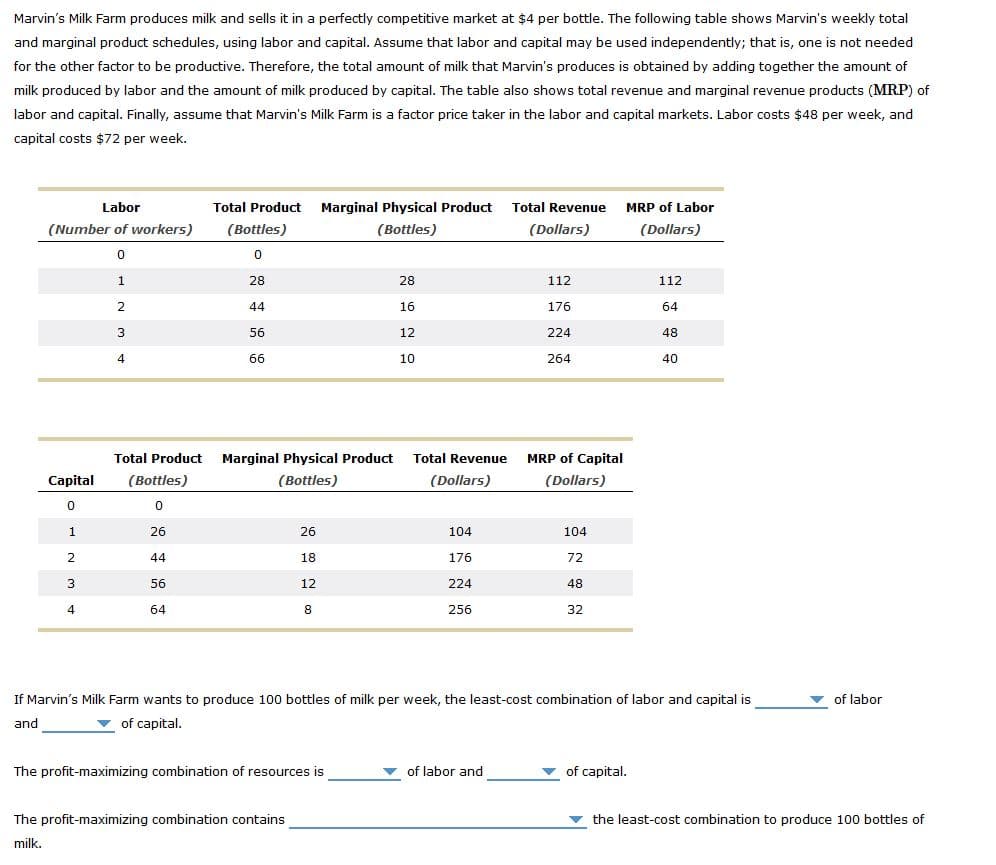Marvin's Milk Farm produces milk and sells it in a perfectly competitive market at $4 per bottle. The following table shows Marvin's weekly total and marginal product schedules, using labor and capital. Assume that labor and capital may be used independently; that is, one is not needed for the other factor to be productive. Therefore, the total amount of milk that Marvin's produces is obtained by adding together the amount of milk produced by labor and the amount of milk produced by capital. The table also shows total revenue and marginal revenue products (MRP) of labor and capital. Finally, assume that Marvin's Milk Farm is a factor price taker in the labor and capital markets. Labor costs $48 per week, and capital costs $72 per week. Labor Total Product Marginal Physical Product Total Revenue MRP of Labor (Number of workers) (Bottles) (Bottles) (Dollars) (Dollars) 28 28 112 112 44 16 176 64 56 12 224 48 66 10 264 40 Total Product Marginal Physical Product Total Revenue MRP of Capital Capital (Bottles) (Bottles) (Dollars) (Dollars) 26 26 104 104 44 18 176 72 3 56 12 224 48 4 64 256 32 If Marvin's Milk Farm wants to produce 100 bottles of milk per week, the least-cost combination of labor and capital is of labor and of capital. The profit-maximizing combination of resources is of labor and of capital. The profit-maximizing combination contains the least-cost combination to produce 100 bottles of milk.
Marvin’s Milk Farm produces milk and sells it in a

Trending now
This is a popular solution!
Step by step
Solved in 3 steps







